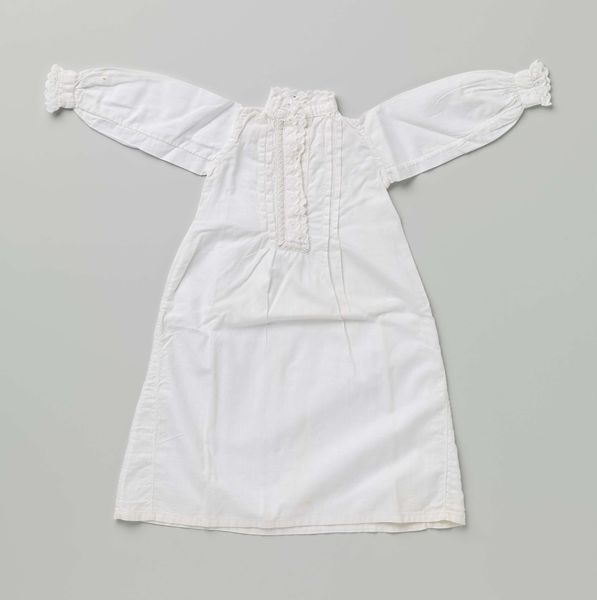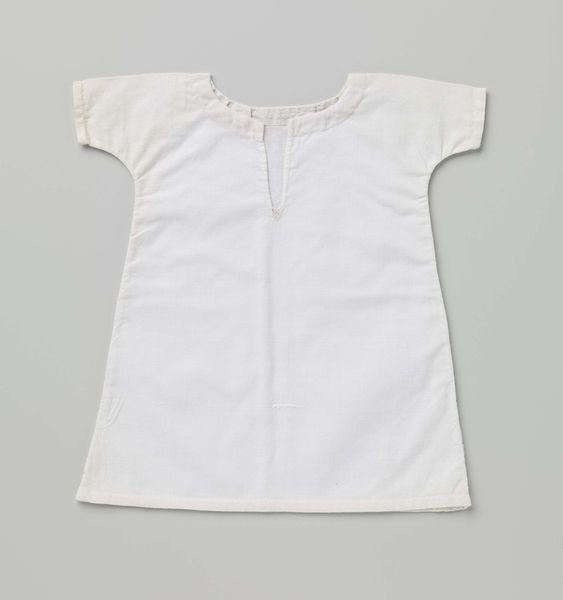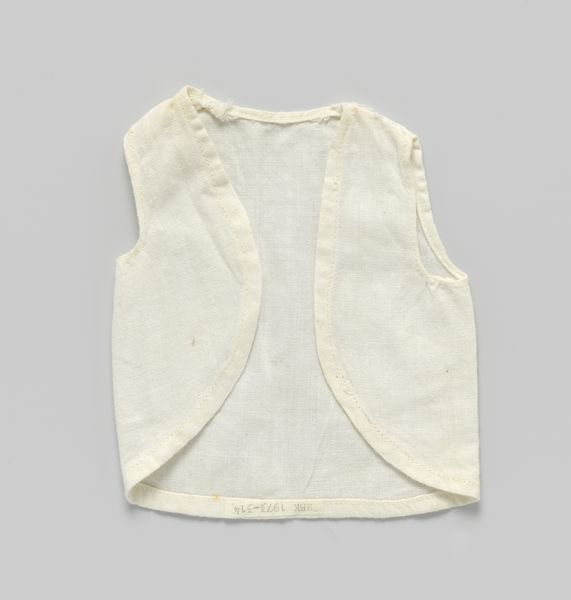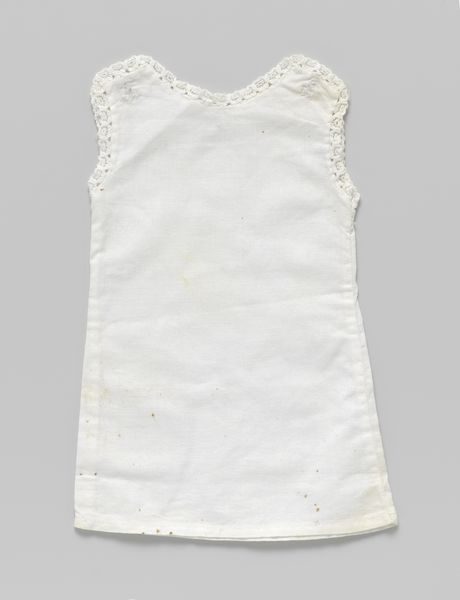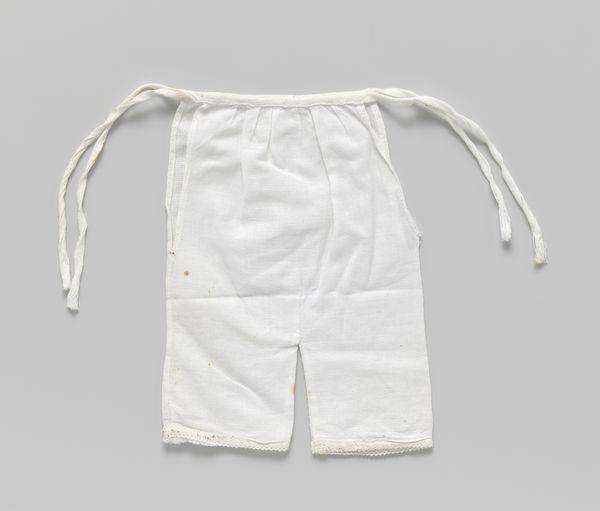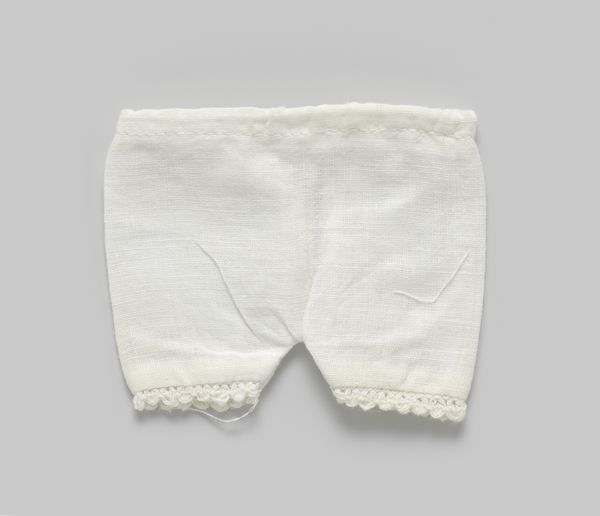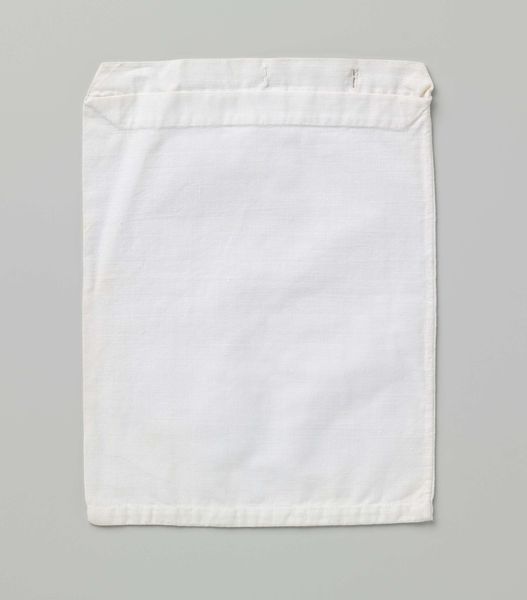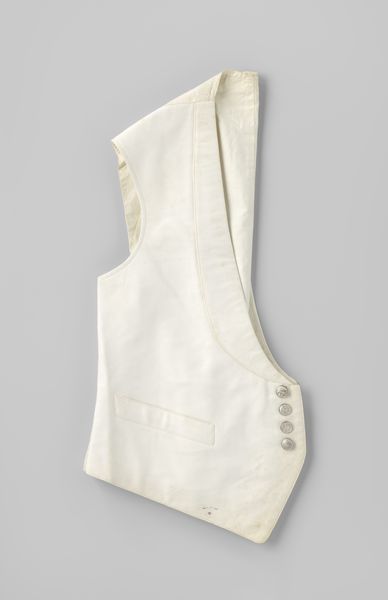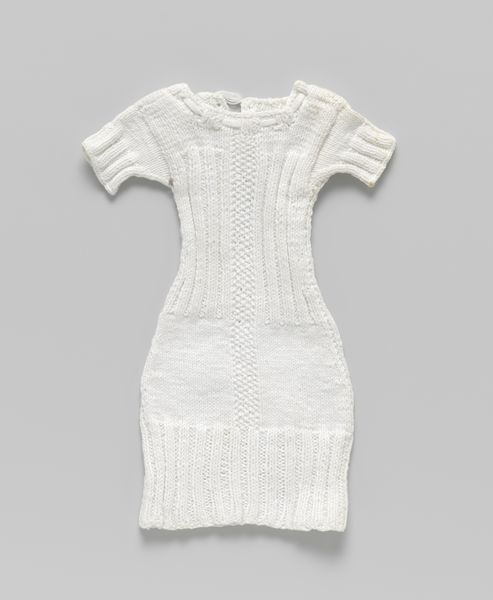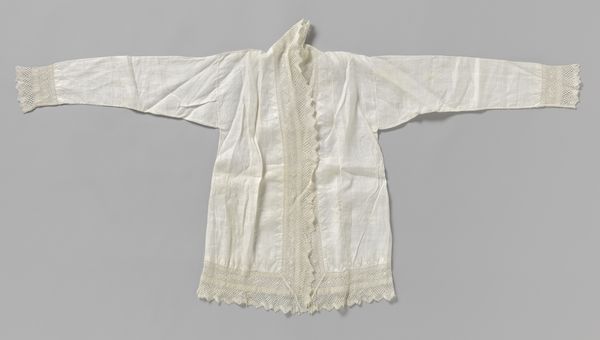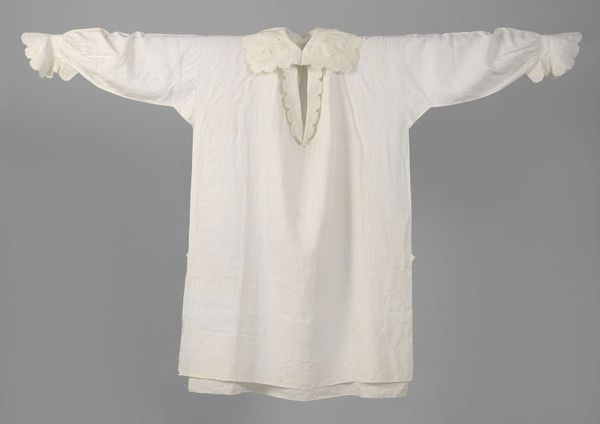
fibre-art, textile, cotton
#
underwear fashion design
#
fibre-art
#
fashion mockup
#
arts-&-crafts-movement
#
fashion merchandise
#
textile
#
clothing promotion photography
#
fashion and textile design
#
clothing photography
#
clothing theme
#
clothing photo
#
cotton
#
imprinted textile
#
clothing design
Copyright: Rijks Museum: Open Domain
Curator: Our next piece is a cotton shirt, featuring a zigzag band, created around 1910 by P. Titjen-Baas. Editor: It’s so simple, almost austere. The white cotton gives it an impression of purity, yet the visible weave suggests a homespun quality, which feels quite grounded. Curator: Indeed. The raw cotton material emphasizes a key value of the Arts and Crafts movement. Its proponents advocated for simpler forms and the inherent beauty of materials. Editor: Note how the shirt’s design is dictated by the weave structure itself. The seams are clean, almost minimal. Do you think it signals a move away from more ornamental Victorian garments? Curator: Absolutely. It rejects the excess ornamentation of mass-produced goods in favour of function and honest construction. It’s really interesting how the texture becomes the defining aesthetic. The little fringes and tied elements lend softness to the hard edges. Editor: Consider the garment's role beyond mere utility; It’s a visual statement about values and ways of living in that period. This shirt almost declares, "I value simplicity and authenticity." Curator: The historical context informs so much here. Around 1910, increased industrialization drove social reform movements toward sustainability, so it also signals the embrace of pre-industrial processes. Editor: Absolutely. One can envision this piece in the context of burgeoning utopian societies that questioned traditional roles and expectations, and aimed for more communal approaches to living. Curator: Looking closer at the structural aspects, the shape itself, quite loose and unconfining, represents that new, simplified silhouette popular at the time, mirroring social shifts in women’s emancipation. Editor: What do you think a modern observer gains by reflecting on such an object? What impact does seeing these domestic Arts and Crafts textiles have today? Curator: It’s a refreshing counterpoint to our fast-fashion consumer culture. "Hemd van katoen, met zigzagband" encourages an awareness of craft, material, and labour involved in all we wear. Editor: I see the value in revisiting this moment of recalibration of production in society and how we imbue art objects, in this case even clothing, with ideological intent.
Comments
No comments
Be the first to comment and join the conversation on the ultimate creative platform.
